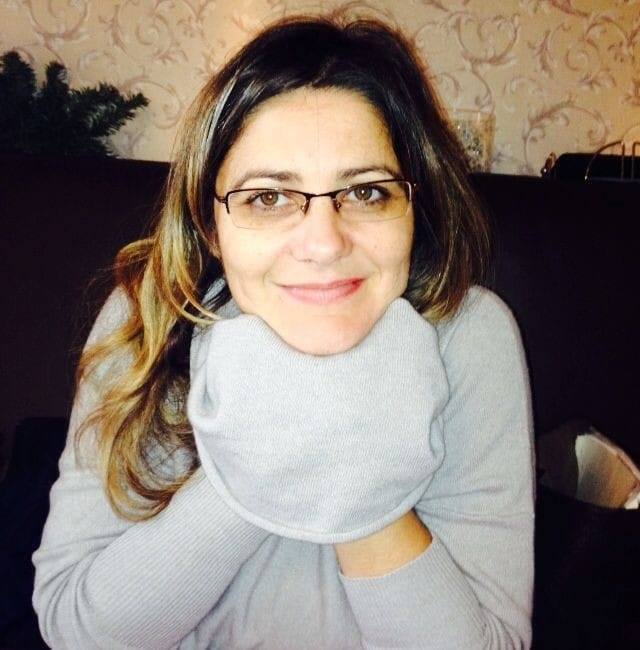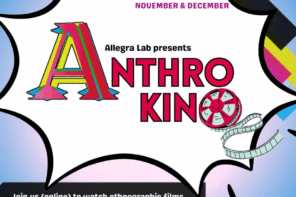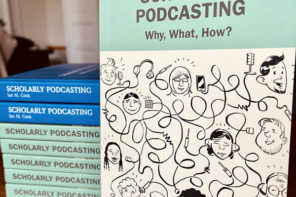
Georgeta: When I first ran for EASA elections in 2015, I described myself as a ”researcher in motion” thinking that many of EASA members would recognize themselves in this position. Of Romanian origins, I did my studies in anthropology between Romania, Italy and France. I could in this way experience directly different academic contexts that offered me the chance to reflect upon the opportunities and difficulties of living and moving between different institutional practices and “academic traditions”. My PhD thesis, defended in 2010, was part of an international PhD program in Ethnology and Anthropology, and was realized in co-tutorship between Italy (University of Perugia) and France (Paris X Nanterre University). It focused on the fast transformations of a Danube Delta fishing village into a touristic place and on the consequences of the natural resources protection. As many of my young fellows, I realized from the very beginning of my career that the path to professorship is a long, curved and exhausting journey. In the best of the cases, I jumped from a post-doc to another, doing all my best to improve my “dossier”, conducting research and teaching as a Visiting Lecturer in Estonia (Tallinn University), Italy (University of Perugia), Romania (Babes-Bolyai University) or serving as a H2020 evaluator. During the past years, I was a Post-Doctoral Fellow in Italy and later on in France, at the French Research Institute for Sustainable Development (IRD France), working in an interdisciplinary research team in collaboration with marine biologists and ecologists on the social representations of coral reefs. In relation to my research interests (environmental anthropology, museum studies, educational anthropology), I may say that I moved from the Danube riverbanks to the Indian Ocean shore trying to establish a fruitful dialogue between social and natural sciences. What happened during the last months of 2018, totally changed my life as I obtained an Assistant Professorship position in France, in Mayotte Island, an ultra-peripheral region of Europe that confirmed even more the description of a “researcher in motion” that of course is directly linked with our profession.
Allegra: What are your main motivations in joining the EASA Committee? Do you have some ‘insider’ knowledge of the association?
Georgeta: I have been on the EASA Executive for two years (2017-2018) as PrecAnthro and lobby liaison and together with Sabine Strasser (EASA PrecAnthro liaison), we hardly work in order to ”give voice” to precarious researchers from different national contexts and geographical areas. Of course, there are no solutions or ”quick recipes” to fight precarity as the situation is different from one context and academic institution to another one. What we tried within EASA was to combine the actions on precarity with the lobbying activities hoping to get the attention of the politicians. If re-elected, as I already stated in the presentation of my profile for EASA elections, I will carry on our campaign to deal with precarity in order to recognize its shared responsibility. Having served as a precarious researcher during the past Executive and experiencing now a “transition phase” to a tenure-track position, offers me the possibility to look at the precarity issue from different points of view.
On the other hand, lobbying is part of a complex strategy and I do consider that the lobbying activities realized by the previous EASA Executives have to be continued at the level of the European Commission. Only by building relationships, entering networks and joining forces with other associations such as the European Alliance for Social Sciences and Humanities (EASSH) that is actively engaged at the level of the European Commission in relation to the Horizon 2020 Programme we can start to ”push” things in the direction we want. Of course, results won’t be immediate but we already started to plant the first seeds…
Being part of EASA Committee is believing firmly in what we want to do, sharing and discussing with the membership urgent questions that concern the future of anthropology but also the future generations of anthropologists. This short but strong ”insider” knowledge I have of EASA can also be seen in an intersectional perspective and linked with my previous experiences as a Secretary and Treasurer of the Italian Academic Association of Anthropology (ANUAC – presently called SIAC) that might provide a basis for upcoming EASA ”strategies” and would allow to have a continuity in the EASA Committee. I have to say that I always thought and believed that is very important to work and be active within scientific associations in order to strengthen the role and promote the image of anthropology.
Allegra: What are your views regarding Open Access publishing and ‘public anthropology’ more broadly?
Georgeta: The Open Access publishing issue is not as simple as one might think and behind the so-called “open access” we often find “hidden costs”. The open access does not have a zero cost and often a good open access journal, contrary to what things might seem to be, costs money. Moreover, funding institutions encourage the open access publications considering that the work that is funded has a broader impact by reaching a wider audience trying to involve in this way citizens and largely the entire society. On my opinion, what can be discussed here is the power of publishing houses or similar instances that often influence the academic evaluation processes that take into consideration the h-index. As we all know, the journal impact factor are used to evaluate a journal’s importance and relevance to other similar scientific journals. Often, according to our research we are looking for the right journal to be used for publication asking ourselves if it’s worth publishing your article in a high impact journal or in an open access one? This might be a very good topic for discussion and material for thought for a round table during the next EASA AGM seminar on the Pros and Cons of Open Access Publishing.
Moreover, the “open access” and “public anthropology” topics leads me to think about the contribution of anthropological knowledge to the contemporary society and ask another question ”What do anthropologists do?”. Of course, this is a passionate topic, more than ever actual. As a reply, I might say that anthropologists offer critical insights to things that are taken as common sense. What we need presently is to make anthropology present in the public sphere communicating with citizens, study and work on delicate social issues such as migration, poverty, security, etc. that have a great impact in the public arena. This might be also an opportunity for being and working as an anthropologist outside of the academic world.
Allegra: A new generation of anthropologists is experiencing a series of concerns related to their profession and their future. How do you see the role of EASA in this scenario?
Georgeta: I have partly replied to this question when making reference to my role within EASA as PrecAnthro liaison. I think EASA has started an important work and opened a dialogue with PrecAnthro collective that definitely has to be continued by the next EASA Executive. One important issue is the survey on precarity initiated and developed in collaboration with PrecAnthro. As many of EASA members already know – considering that out of 2300 EASA members more than 1000 responded to the survey – the goals of the survey were meant to learn from EASA membership more on the employment status and work security, experiences with labour conditions in different academic contexts, current employment situation within academia, and future career aspiration. The preliminary results of the survey were presented during the 2018 AGM in Stockholm and the data will be analysed and disseminated in the following months. Two other events concerning precarity were organized within EASA: one was the EASA AGM seminar ”On Politics and Precarities in academia: anthropological perspectives” co-organized by Sabine Strasser at Bern University and the other one concerned EASA Plenary C Early Career Scholars Forum ”Immobility, uncertainty and hope – critical reflections on academic precarity”. All these activities and discussions within EASA Exec lead to a position paper on precarity that will be used for doing lobby at different levels starting from departments, research centres, funding bodies, up to European institutions. A possible ”solution” would be to organize in future within EASA a Precarity Observatory to monitor and understand precarity that might also function as a platform to exchange information between anthropologists, politicians and representatives of other scientific associations. Finally yet importantly, we don’t have to forget that anthropologists are also working outside academia. Maybe EASA might work in the direction of extending these professional spaces for anthropologists that have all the competences to work at the level of higher institutions or development agencies to give only a few examples.









